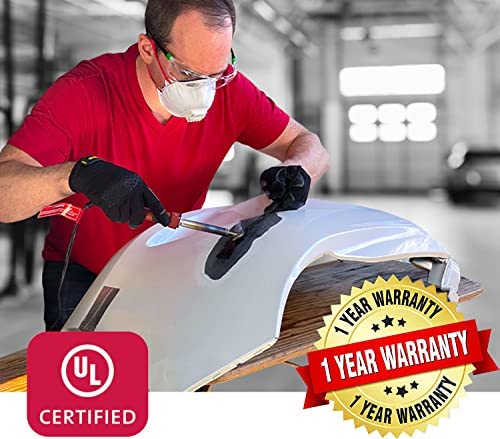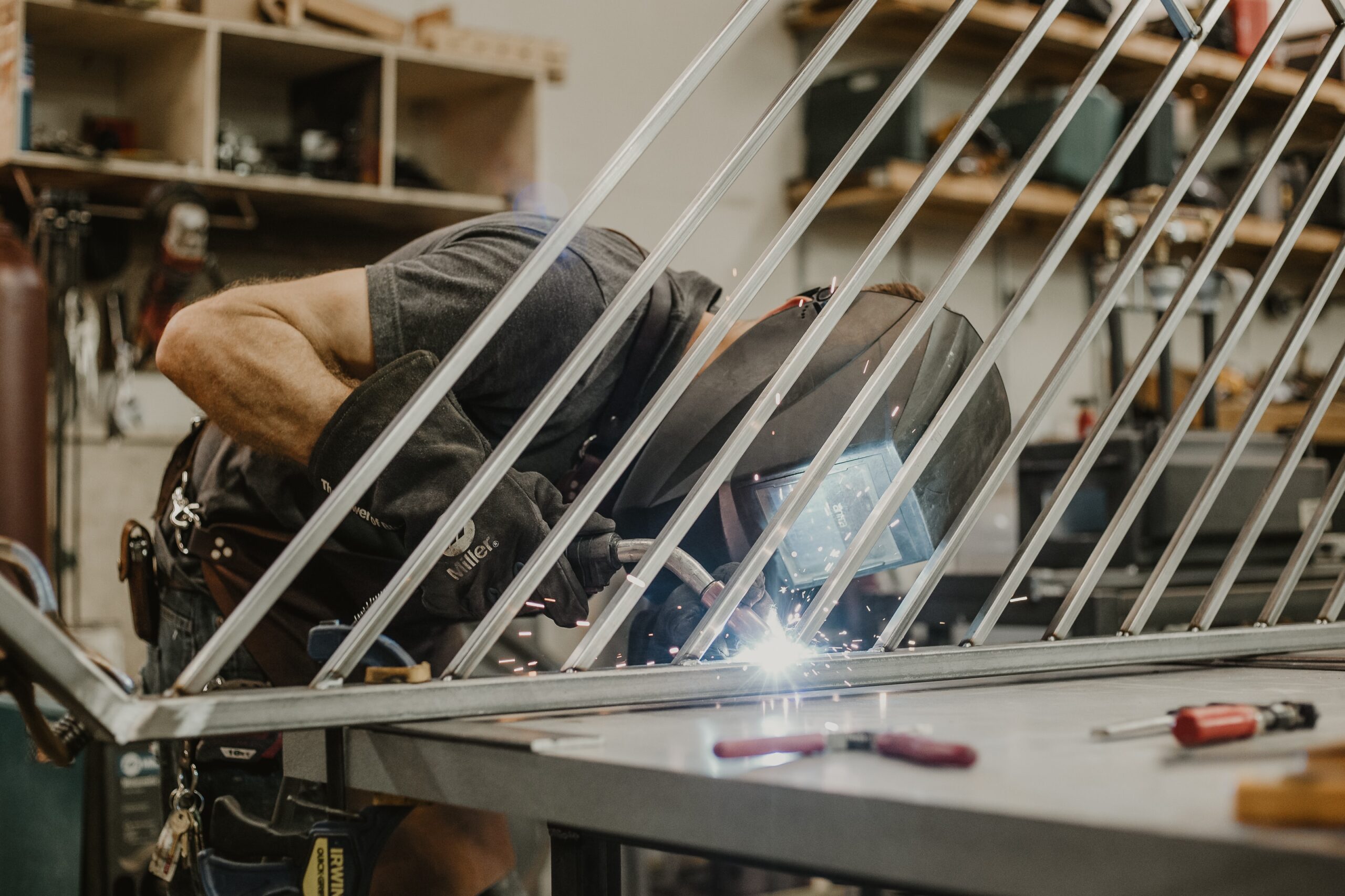Common Welding Repair Service Issues and Just How to Address Them Properly
Welding repairs usually run into a series of issues that can jeopardize the integrity of the end product. Common troubles include poor penetration, porosity, and misalignment, amongst others. Each problem presents unique difficulties that call for details techniques for resolution. Understanding these concerns is essential for welders aiming to enhance their end results and skills. This discussion will discover these usual welding repair issues and reliable techniques to resolve them.
Inadequate Infiltration
Insufficient penetration takes place when the weld steel stops working to completely fuse with the base material, resulting in weak joints and potential structural failures. This concern typically originates from inadequate heat input, wrong electrode angle, or incorrect welding speed. Welders might come across insufficient penetration due to a miscalculation of the necessary parameters for a certain material thickness or kind. Furthermore, contamination on the base material's surface can impede effective bonding, exacerbating the problem. To attend to inadequate penetration, welders need to ensure suitable settings on their devices and preserve a clean work surface. Routine evaluation of welds is advised to determine any shortages early, permitting timely improvements and the prevention of jeopardized structural honesty in welded settings up.
Porosity
Porosity is a common problem in bonded joints that materializes as little gas bubbles caught within the weld metal. This issue can compromise the integrity of the weld, causing lowered strength and potential failing under stress and anxiety. Montana Mobile Welding and Repair Belgrade Welding. Porosity typically occurs from contamination, moisture, or inappropriate welding techniques, which enable gases to escape right into the liquified weld pool. To resolve porosity, welders must ensure proper surface prep work, keep a tidy workplace, and make use of ideal welding specifications. In addition, selecting the appropriate filler product and protecting gas can alleviate gas entrapment. Regular assessment and testing of welds can help determine porosity early, guaranteeing prompt rehabilitative activities are taken, thereby protecting the quality and dependability of the bonded structure
Imbalance
Imbalance in welding can arise from numerous elements, including improper configuration and thermal development. Understanding the root causes is vital for effective resolution. Numerous improvement methods are offered to straighten parts and assure architectural stability.
Reasons for Imbalance
Welding imbalance typically originates from a range of underlying concerns that can compromise architectural honesty. One primary cause is incorrect fit-up of components prior to welding, which can result in gaps and irregular surface areas. Variations in thermal growth during the welding procedure can likewise lead to distortion, especially if the products being signed up with have various coefficients of expansion. Furthermore, insufficient fixturing and securing may fail to hold elements securely in place, leading to activity during welding. Badly maintained devices, consisting of welding equipments and tools, might introduce variances in the weld grain, additional adding to imbalance. Finally, driver mistake, coming from insufficient training or experience, can additionally play a significant duty in developing misaligned welds.
Adjustment Strategies Readily Available
Addressing misalignment properly needs a combination of corrective methods tailored to the certain issues handy. One common approach is using fixtures or jigs to hold elements in the proper placement during welding, ensuring consistent alignment. In addition, pre-heating the materials can aid lower distortion and boost fit-up. For substantial misalignment, mechanical adjustment strategies, such as using hydraulic jacks or clamps, can be used to remedy the position before welding. Post-weld warmth therapy might likewise be required to alleviate anxieties brought on by misalignment. Cautious examination and modification throughout the configuration phase can avoid imbalance issues from coming to be considerable problems, promoting a smoother welding process and boosting general structural stability.
Distortion
Distortion is a typical obstacle in welding that can arise from numerous variables, including unequal heating and cooling. Comprehending the root causes of distortion is important for implementing reliable avoidance techniques. Addressing this concern not just improves structural stability yet additionally boosts the overall quality of the weld.
Root causes of Distortion
When subjected to the extreme warmth of welding, materials usually undertake adjustments that can result in distortion. This phenomenon largely arises from thermal expansion and tightening during the welding process. As the weld area warms up, the product increases; upon air conditioning, it gets, which can develop internal tensions. On top of that, unequal home heating throughout a workpiece can aggravate these tensions, resulting in warping or flexing. The kind of material also plays a significant duty; steels with differing thermal conductivity and coefficients of development may react differently, leading to unforeseeable distortions. Bad joint design and insufficient fixturing can add to imbalance during welding, enhancing the likelihood of distortion. Recognizing these reasons is essential for reliable welding repair service and avoidance strategies.
Avoidance Techniques
Reliable prevention techniques for distortion during welding concentrate on managing warmth input and guaranteeing proper joint style. Keeping a constant heat input aids to reduce thermal growth and tightening, which can lead to distortion. Making use of strategies such as pre-heating the work surface can additionally reduce the temperature level slope, advertising uniform home heating. In addition, selecting appropriate joint designs, such as T-joints or lap joints, can boost stability and minimize stress and anxiety concentrations. Applying appropriate fixturing to safeguard the work surfaces in position even more help in maintaining alignment during the welding process. Lastly, staggered welding series can distribute heat extra evenly, avoiding localized distortion. By using these techniques, welders can considerably lower the likelihood of distortion and improve the total top quality of their welds.
Fracturing
Cracking is a common problem come across in welding repair services, usually arising from various factors such as improper cooling prices, material choice, or poor joint prep work. The occurrence of splits additional info can considerably compromise the integrity of the weld, leading to prospective failings throughout procedure. To address this problem, welders should first examine the source, making certain that materials are suitable and properly chosen for the details application. Furthermore, controlling the cooling rate during the welding process is necessary; rapid air conditioning can generate anxiety and lead to breaking. Appropriate joint style and preparation additionally add to lessening the risk. Applying these approaches can enhance weld top quality and durability, eventually lowering the likelihood of fracturing in finished weldments.

Incomplete Combination
A significant issue in welding repairs is insufficient combination, which occurs when the weld steel does not sufficiently bond with the base product or previous weld passes - Montana Mobile Welding and Repair Belgrade. This flaw can result in weak points in the joint, potentially endangering the integrity of the bonded structure. Aspects adding to incomplete fusion consist of inadequate warm input, inappropriate welding method, and contamination of the surface areas being joined. To address this problem successfully, welders ought to assure proper pre-weld cleaning and surface preparation, in addition to change their welding criteria to achieve appropriate infiltration and blend. Normal evaluation during the welding process can likewise help determine incomplete combination early, enabling for prompt restorative measures to improve the overall quality of the weld
Overheating
While welding repair work can improve architectural stability, overheating offers a significant challenge that can bring about product destruction. Excessive heat throughout welding can modify the mechanical properties of steels, leading to lowered strength, increased brittleness, and warping. This phenomenon is especially critical in high-stress applications where architectural dependability is paramount. Determining overheating can include aesthetic evaluations for discoloration or distortion, in addition to monitoring temperature level during the welding process. To reduce the dangers connected with getting too hot, welders ought to utilize ideal methods, such as regulating warm input, adjusting traveling rate, and using ideal filler materials. In addition, executing pre- and post-weld warmth treatments can assist restore product homes and improve the total top quality of the repair work, making certain lasting performance and safety and security.
Often Asked Concerns
What Are the Common Indicators of a Welding Issue?

Just How Can I Check My Welds for Quality?
To examine welds for high quality, one can use visual assessments, ultrasonic screening, and radiographic techniques. Each technique guarantees structural honesty, recognizes defects, and validates adherence to specified standards, ultimately enhancing the dependability of the welded joints.
What Safety and security Precautions Should I Take While Welding?
When welding, one should prioritize safety by putting on suitable personal safety equipment, making certain proper ventilation, protecting flammable materials away, keeping a clean office, and recognizing surroundings to avoid injuries and mishaps.
Can I Fix a Weld Without Redoing the Entire Joint?
Repairing a weld without redoing the whole joint is possible, relying on the damages (Montana Mobile Welding and Repair Belgrade). Methods such as grinding, including filler material, or utilizing a welding procedure can successfully resolve certain problems while preserving the surrounding framework
What Devices Are Necessary for Efficient Welding Repairs?
Necessary tools for effective welding repair services consist of a welding equipment, wire brush, grinder, protective equipment, clamps, and filler products. Each device plays an essential duty in making certain high quality and safety during the fixing process. Porosity usually occurs from contamination, dampness, or incorrect welding strategies, which allow stick welding stainless steel gases to get away right into the molten weld pool. Poorly conserved equipment, consisting of welding makers and tools, may present disparities in the weld bead, additional contributing to imbalance. When subjected to the extreme warmth of welding, materials frequently undergo modifications that can lead to distortion. Cracking is a common problem run into in welding repairs, usually resulting from various elements such as improper cooling prices, material selection, or insufficient joint prep work. A significant problem in welding repairs is incomplete combination, which happens when the weld metal does not effectively bond with the base product or previous weld passes.
Comments on “Top 5 weld defects tackled by Belgrade Welding experts”